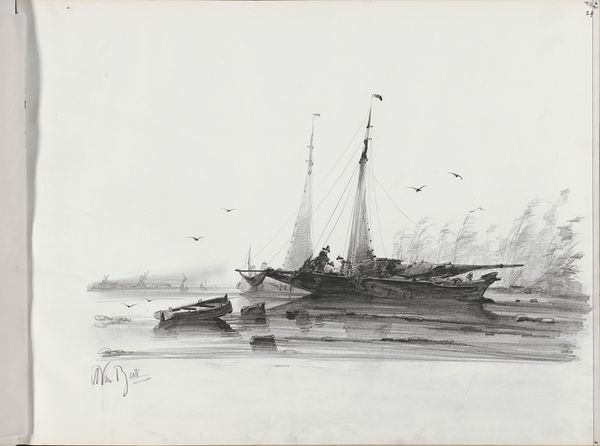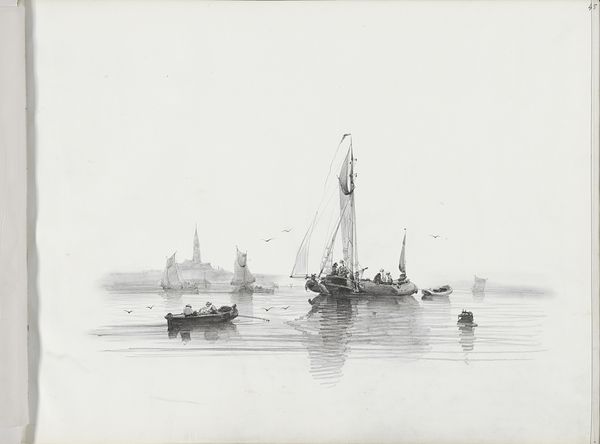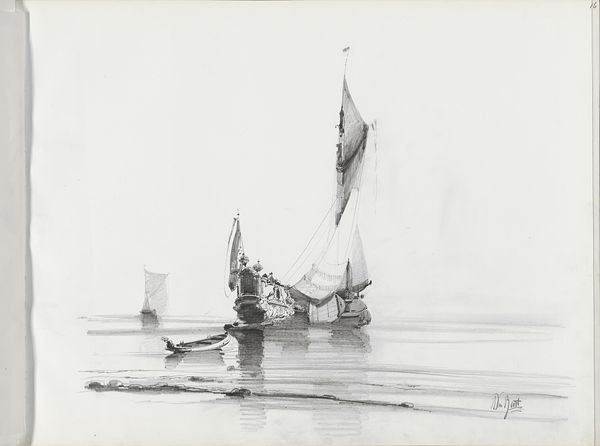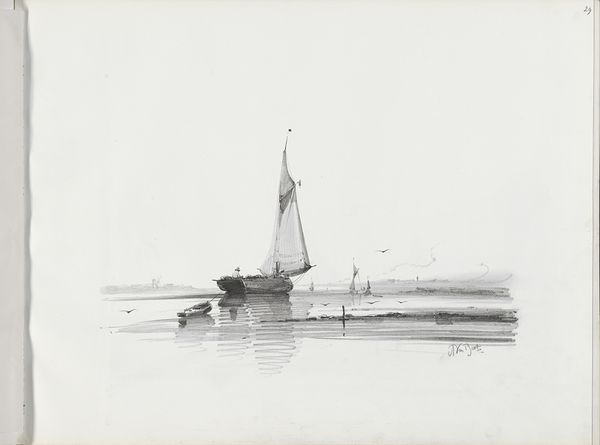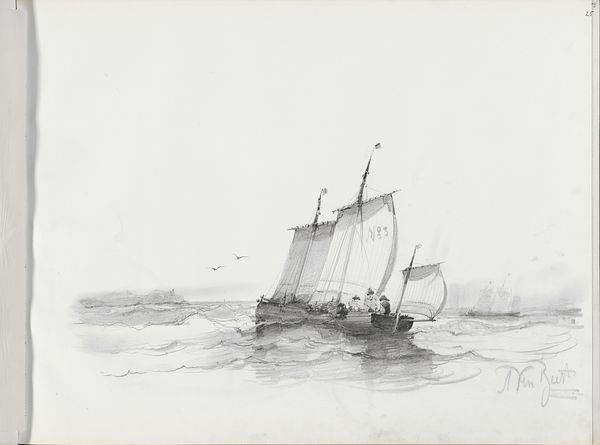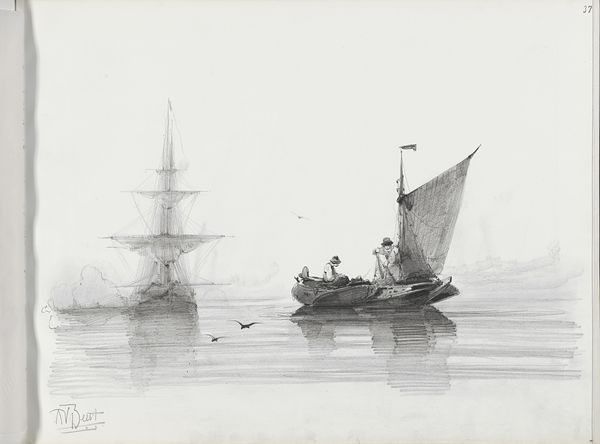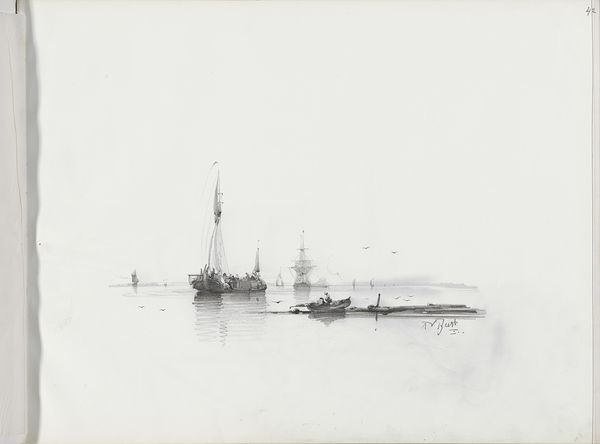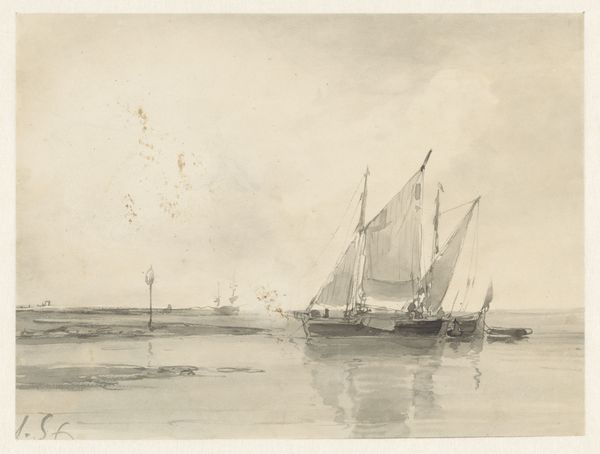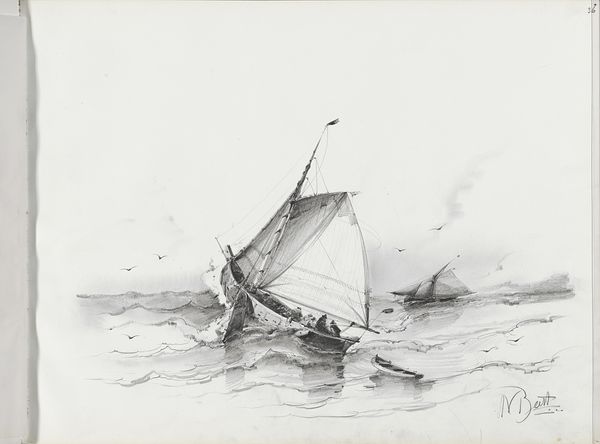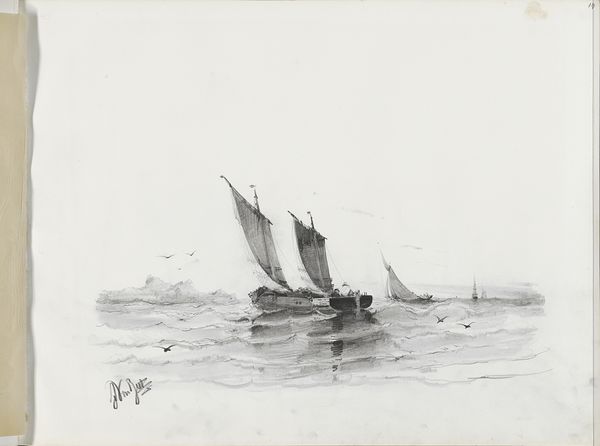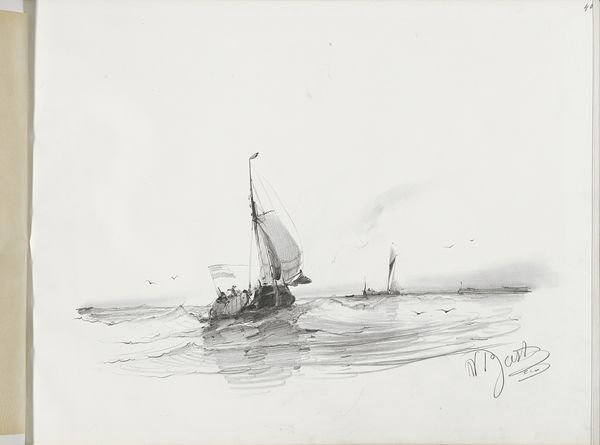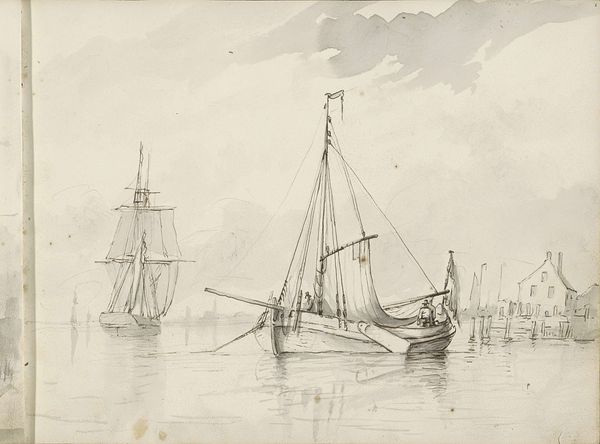
drawing, pencil
#
drawing
#
pencil sketch
#
landscape
#
etching
#
figuration
#
romanticism
#
pencil
#
realism
Copyright: Rijks Museum: Open Domain
Editor: This is Albertus van Beest's "Figuren op een afgemeerd zeilschip voor een kust," created sometime between 1830 and 1860 using pencil. There’s something so serene about the reflection of the ship in the water... it almost feels like a memory. What do you see in this piece? Curator: It speaks to me of journeys, both literal and metaphorical. Notice the figures aboard. What do you think their posture conveys? Are they returning or departing? The ship as a symbol has carried enormous cultural weight - from exploration and trade to migration and even warfare. Editor: They do seem a little pensive. It's interesting how much narrative you can pull from what seems like a simple landscape. The birds even seem symbolic now! Curator: Indeed. The birds, often seen as messengers or symbols of freedom, amplify that sense of potentiality. But the anchoring of the ship prevents it taking off - can you see that dichotomy? Van Beest may be pointing towards the tension between ambition and stasis, between the allure of the unknown and the comfort of the familiar. Editor: I didn't think of it that way at first, but that tension is definitely there in the imagery. Do you think the realism style lends itself well to making the symbolism effective? Curator: Absolutely. The attention to detail anchors the viewer in a believable reality, making the symbolic elements feel more potent, more grounded in lived experience. The ship becomes not just a vessel, but an experience, loaded with emotional baggage of voyages taken and those yet to be. Editor: I’ll definitely be looking at maritime art differently from now on! Thanks for illuminating the symbolism and the cultural memory attached to it. Curator: It's in such drawings we grasp the enduring power of art: how symbols evolve, carrying generations of cultural baggage in their visual forms. It enriches not only the picture but our own experience.
Comments
No comments
Be the first to comment and join the conversation on the ultimate creative platform.
